
views
X
Trustworthy Source
American Academy of Dermatology
Professional organization made of over 20,000 certified dermatologists
Go to source
Using Regular Conditioner
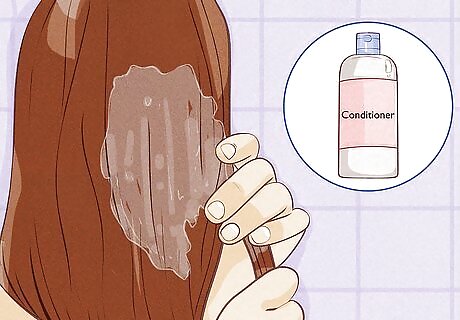
Choose the right conditioner for your hair type. A traditional conditioner is applied every time you shower, just after you rinse out your shampoo. This type of conditioner works to repair the damage done by hot tools, chemicals, and general wear-and-tear that your hair experiences on a daily basis. Choose a type of conditioner that is advertised for your specific hair needs; whether you have curly and frizzy hair, dry and damaged hair, colored hair, fine hair, relaxed hair, or limp and lank hair, there is a specific conditioner that can help with each.
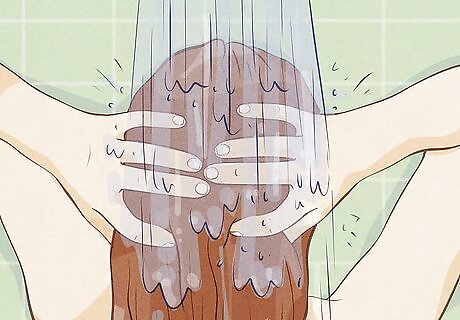
Wash your hair. Hop in the shower, and go along with your regular washing routine. You’ll condition your hair after you wash it, so give your scalp and strands a good scrubbing with your favorite shampoo. Focus most of your washing power on the scalp, being careful not to tug at your wet hair as you wash as this can damage the ends and cause more breakage.
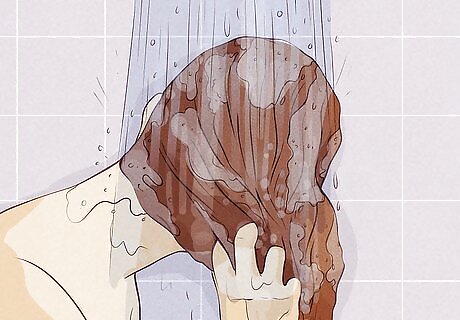
Rinse out your shampoo. Use warm water to wash out the shampoo. Warm water is safer on your hair than hot water is. Be careful not to tug on the strands if you run your fingers through it. When your hair feels ‘squeaky’, you’ve rinsed out all the shampoo.
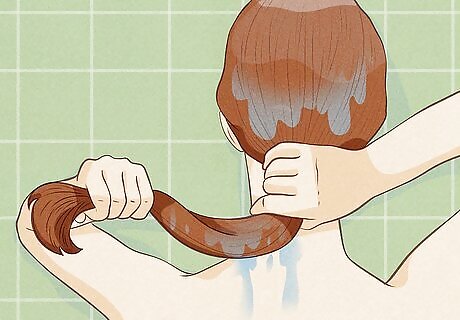
Wring out your hair. If your hair is sopping wet, any conditioner you try to apply will run right off and won’t stick long enough to affect your hair. If your hair is very short, you probably won’t have to do much wringing. If, however, you have long hair, spend a bit of time getting as much water out of it as you can.
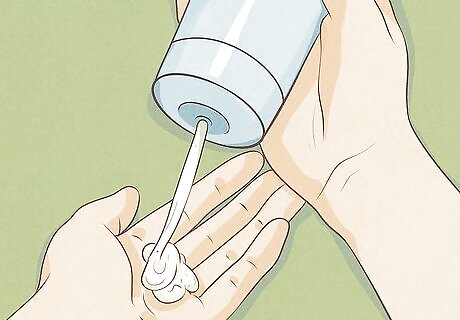
Apply your conditioner. Pour a bit of conditioner into the palm of your hand; the amount you need will vary depending on the length of your hair. A dime-sized amount is usually recommended for professional conditioners, while drug store brands may require more because they can be diluted. If your hair is very long, you may need a whole palm-full of conditioner. Run this through the mid-shafts of your hair, trying to apply it to every strand that you’re able. Work the conditioner toward the ends of your hair, as this is the part that is damaged (it’s the oldest). Putting conditioner near your scalp and roots can actually clog your follicles, and slow hair growth/increase oil production.
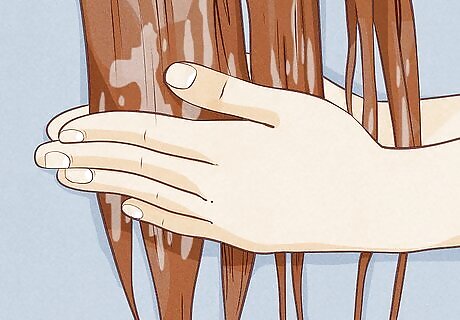
Let the conditioner set. This step is slightly optional; the longer you wait and allow your conditioner to set, the more it will be able to do to improve the health of your hair. If you’re in a rush, you can rinse it out nearly immediately after, but it won’t make your hair as soft and shiny as it normally would. Try applying your conditioner, and then washing the rest of your body/face while it sets. Then when you’re finished (normally a minute or two later), you can rinse out your conditioner for maximum effect.
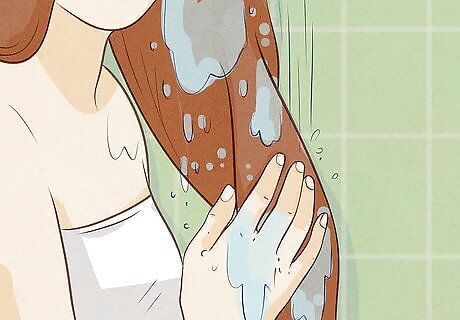
Rinse out the conditioner. Assuming you’ve turned the water temperature back up for comfort’s sake, turn it back down as cold as you can handle it. As aforementioned, the cold water is healthier for your hair. Spend a few minutes rinsing out the conditioner; if your hair still feels ‘slimy’, then you haven’t gotten it all out. When your hair is smooth and no longer feels super slippery, then you’re set! Wring out your hair and you’re done conditioning.
Using a Leave-In Conditioner
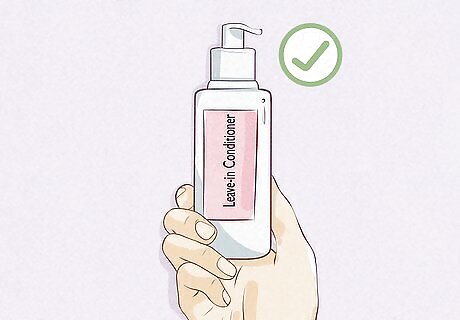
Choose a leave-in conditioner for your hair type. As with regular conditioner, there are many varieties of leave-in conditioner depending on your needs. There are two general styles of leave-in conditioner: cream and spray-on. The former variety is best for thick, long, or curly hair, as it weighs down the strands a bit. The latter variety is best for thin or straight hair, as it is a bit lighter-weight.
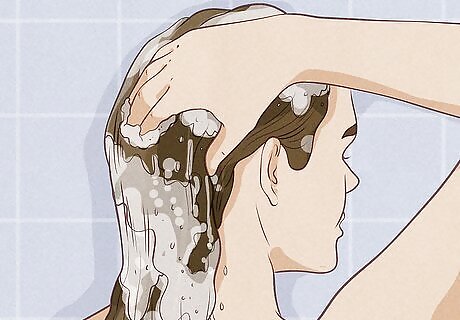
Shampoo and condition your hair. Go about your regular hair treatment regimen. Leave-in conditioner does not need to be rinsed out (as the name suggests) but does need to be applied to damp hair. Use the aforementioned directions for washing and conditioning your hair, and then towel-dry it so that it is just damp.

Place a small amount of serum on the palm of your hand. Most products will recommend a pea-sized amount for medium length hair of average thickness, but the amount will vary from person to person. You can always add more product to your hair, so begin with less than you think you will need.
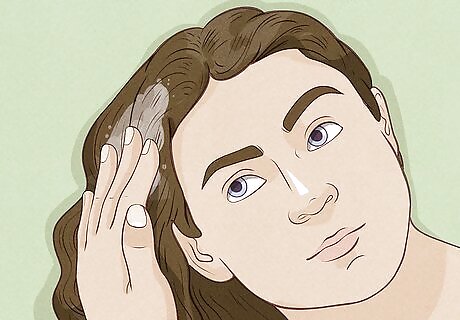
Rub the product into your hair. Rub your hands together to thin out the conditioner a bit, and then begin running it through the ends of your locks. As with regular conditioner, avoid getting it near your scalp or the roots of your hair; keep it on the most damaged (oldest) parts of your hair, typically from half the length downwards.
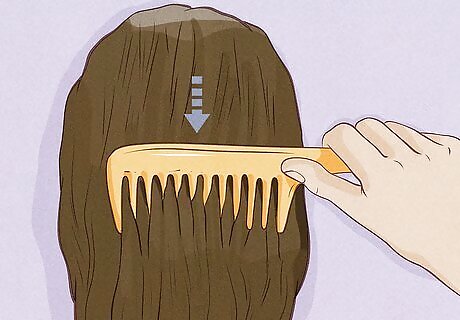
Comb through your hair. Use a wide-tooth comb to brush your hair after applying the leave-in conditioner. This will spread the product out even further, and help to avoid clumps of the conditioner from making certain sections of your hair greasy while others are left dry.
Using a Deep Conditioner
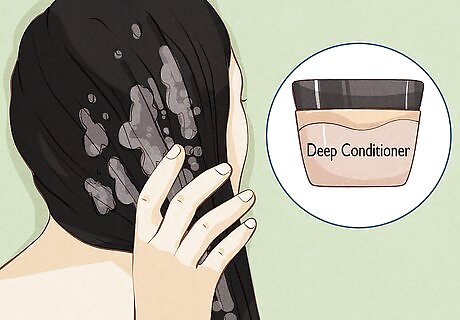
Choose a deep conditioner. Deep conditioners all have the same goal: to repair chronically dry/damaged hair. Therefore, there aren’t too many ‘types’ of deep conditioners to choose from, just different brands. Find a deep conditioner that meets your hair and budget needs.
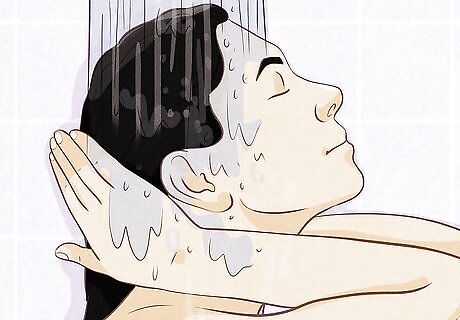
Wet your hair. Rinse through your hair with warm or cool water (the colder the better). You can choose to shampoo your hair first if you would like, but all you really need to do is to get all of your hair wet. When you’re finished wring it out, removing as much extra water as you can.
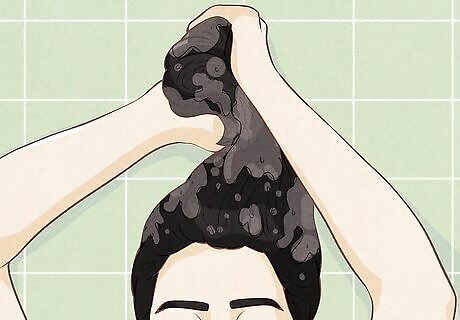
Apply the deep conditioner. Scoop some of the conditioner out of the container with your hands, and apply a thick coating to your entire head. Focus most of the conditioner on the ends of your hair, but feel free to spread it all the way to your roots. Be sure to separate any large chunks of hair so that each strand gets a thorough coating.

Wait for it to set. Apply a shower cap to your head to keep your hair off your clothes/away from your face. Follow the directions for your specific conditioner, and leave it to cure. Typically, it should take between 20-30 minutes for the conditioner to work its magic. If you want an added boost, you can set your hairdryer on ‘warm’ and heat up the conditioner as it sets.

Wash out the deep conditioner. Remove the shower cap, and turn your water on as cold as you can handle it. Spend 3-5 minutes rinsing out all of the deep conditioner, being careful not to leave any extra to set in your hair. When your hair no longer feels ‘slimy’, you’ve likely removed all of the conditioner. At this point you are free to dry and style your hair as you wish.


















Comments
0 comment